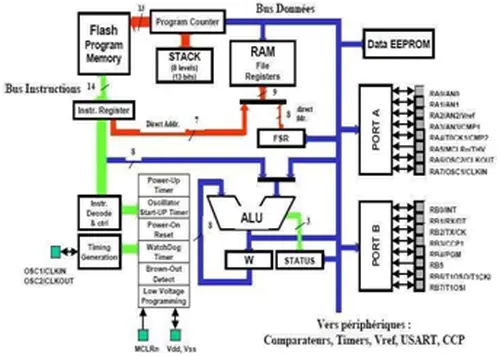The title, “Easy Way to Learn Robotics Using Microcontrollers,” promises an accessible entry point for those curious about the exciting world of robotics. This commentary delves into the potential of this project, exploring its strengths, considerations for improvement, and resources to enhance the learning experience.
Strengths of the Project
- Focus on Microcontrollers: Microcontrollers are the brains of many robots, making them an excellent starting point for robotics education. By focusing on microcontrollers, this project equips learners with fundamental skills applicable to a wide range of robotic applications.
- Accessibility: The term “Easy Way” suggests the project prioritizes user-friendliness. This could involve clear explanations, step-by-step tutorials, and readily available resources.
- Practical Learning: Learning by doing is a powerful method. The project might incorporate building simple robots, allowing learners to apply their microcontroller knowledge in a tangible way. This hands-on approach reinforces concepts and fosters creativity.
Considerations for Improvement
- Defining “Easy”: The concept of “easy” can be subjective. Beginners might have varying levels of experience with programming and electronics. The project could benefit from offering tiered learning paths, catering to those with no prior knowledge and those with some technical background.
- Microcontroller Choice: There are numerous microcontrollers available, each with its strengths and weaknesses. The project should carefully consider the target audience and choose a microcontroller that is:
- Beginner-friendly: A microcontroller with a straightforward programming language and readily available development tools would lower the barrier to entry.
- Versatile: The chosen microcontroller should be capable of supporting a range of basic robotic functions like motor control and sensor readings. Popular options for beginners include Arduino and Raspberry Pi Pico.
- Project Scope: Striking a balance between project complexity and learning objectives is crucial. Overly simple projects might not offer enough challenge, while overly complex ones could overwhelm beginners.
Enhancing the Learning Experience
- Learning Resources: The project should provide a comprehensive set of learning resources, including:
- Tutorials: Step-by-step tutorials that guide learners through microcontroller programming, circuit building, and robot assembly.
- Videos: Interactive video tutorials can be engaging and visually demonstrate concepts.
- Troubleshooting Tips: Anticipate common challenges faced by beginners and provide clear troubleshooting guidance.
- Community and Support: Building a supportive community around the project fosters collaboration and problem-solving. This could involve online forums, where learners can share experiences, ask questions, and get help from others.
- Project Ideas: Provide a curated list of robot projects with increasing complexity, allowing learners to graduate from basic tasks like LED blinking to more advanced functionalities like line-following or obstacle avoidance.
Overall, “Easy Way to Learn Robotics Using Microcontrollers” has the potential to be a valuable resource for aspiring roboticists. By focusing on accessibility, practical learning, and providing the right set of resources, the project can empower individuals to take their first steps into the fascinating world of robots.
Additional Considerations
- Safety: When working with electronics, especially for beginners, it’s important to emphasize safety practices like proper handling of components and avoiding electrical hazards.
- Real-world Applications: Showcasing how robots are used in various fields can inspire learners and motivate them to pursue further learning.
By incorporating these suggestions, “Easy Way to Learn Robotics Using Microcontrollers” can create a truly engaging and rewarding learning experience for beginners in the exciting field of robotics.

